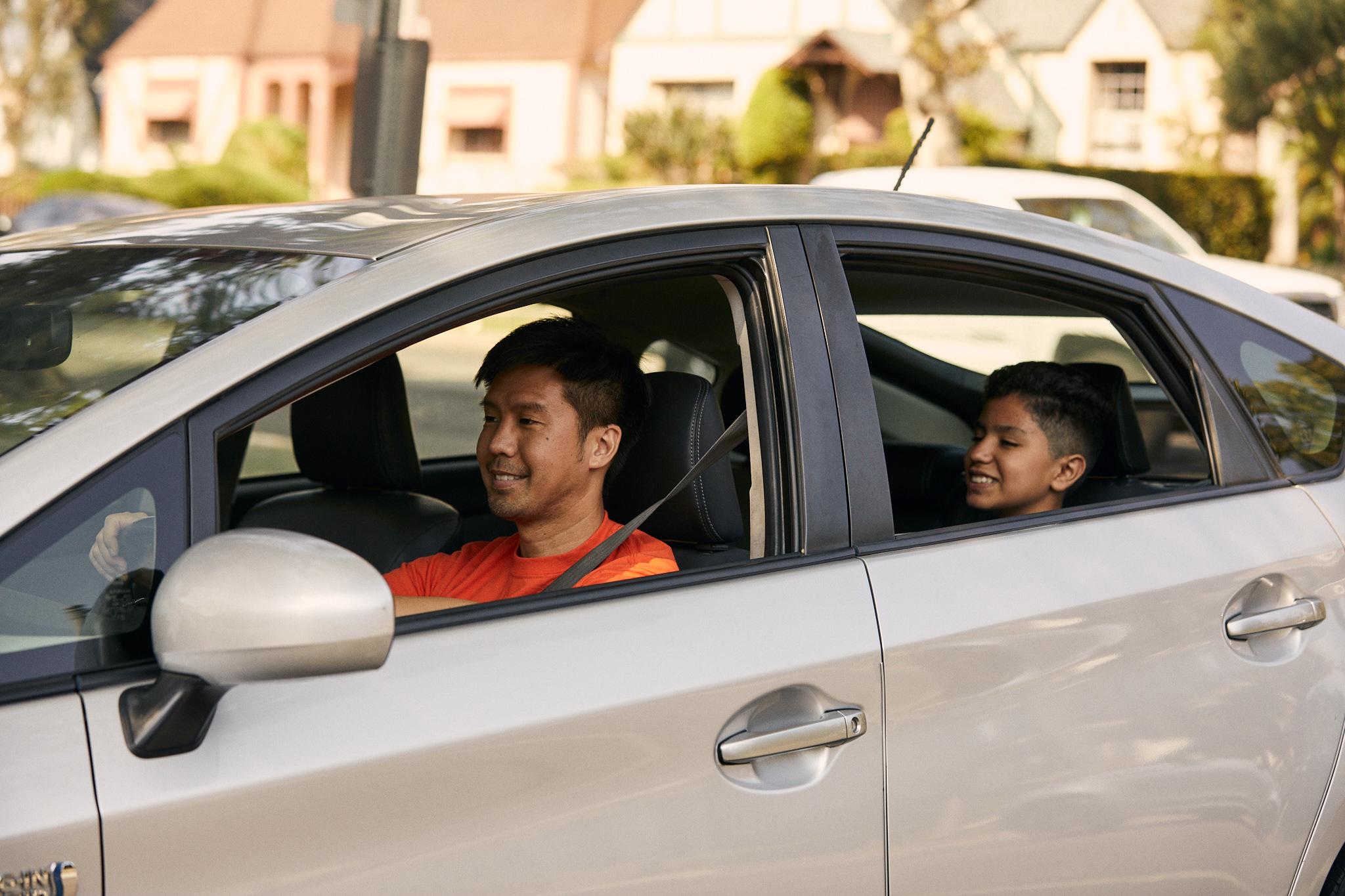The challenges facing school transportation in Oklahoma City go far beyond the routine inconvenience of a few late buses. When Oklahoma City Public Schools (OKCPS) warned parents about delays on January 30, 2025, it was because multiple drivers had called in sick the same day — a situation that’s become increasingly common across the country.
And proposed bus route cuts aren’t sitting well with Oklahoma City residents.
This strain isn’t isolated to OKCPS; it’s a metro-wide crisis. From the districts of Bricktown, West Village, and City Center, throughout other areas in the metroplex like Guthrie, Moore, Mustang, Edmond, and Yukon, similar struggles exist with bus driver shortages and adapting to the needs of a diverse student population.
For families who rely on school buses for a safe and reliable way to get their children to school, this daily uncertainty adds a significant layer of stress and logistical problems. From overcrowded buses where children are forced to sit in the aisles in areas like the southside, to routine delays of 30-45 minutes impacting families in the northwest and northeast, the current system is falling short of meeting the basic needs of students.
As districts across the metro area grapple with these issues, they are increasingly exploring alternative solutions. The traditional “yellow bus” model, while foundational, is no longer sufficient on its own to address every challenge. Some districts are now turning to supplemental school transportation services to ensure every student can get to school safely and on time, thereby reducing chronic absenteeism and supporting academic success.
Why Oklahoma City Districts Are Scrambling for Bus Drivers
The transportation crisis isn’t limited to a single problem or district in the Oklahoma City metro area. In 2024, OKCPS could have hired 10 bus drivers at the start of the school year, but the district couldn’t find qualified candidates. Several factors are compounding the problem in Oklahoma:
Licensing requirements: Even when districts find interested candidates, hurdles remain. Bus drivers must maintain a current health certificate and adhere to a number of checks, tests, and reports that narrow an already limited candidate pool — and the Oklahoma State Board of Education is pushing for even stricter requirements.
Workload and compensation: It’s also difficult to find drivers willing to work part-time for compensation that falls short when more flexible options and full-time positions exist. As Yukon Transportation Director Christy Clemons puts it, “I think a big part is just pay.” Bus drivers work six hours a day for 173 days a year, competing against a job market ripe with full-time opportunities that don’t require specialized licensing.
For families, these staffing shortages mean daily uncertainty. Moore parent Lisa Whitehead has watched her daughter’s bus become so overcrowded that kids sit in aisles and on each other’s laps — and students across the metro regularly wait 30-45 minutes past their scheduled pickup times. “When they do get on the bus, it’s a fight to find a seat. . . . My daughter had to sit on someone’s lap just a few days ago on the way home,” Whitehead said.
This isn’t just an Oklahoma City problem. Nationally, more than 80% of school district administrators report driver shortages are a problem, pushing 63% of parents to personally handle the daily school run. These issues are making getting to school increasingly unpredictable for Oklahoma City families.
The Other Piece of the Transportation Puzzle: Complex Student Needs
Driver shortages are only part of the story. Many students in Oklahoma City face housing instability or frequent moves, or attend schools outside their neighborhoods. Each of these factors complicates school transportation logistics and routing.
Housing instability: During the 2024–2025 school year, 60% of students experiencing homelessness or housing instability in Oklahoma City Public Schools were chronically absent — defined as missing 10% or more of school days (approximately 18 days per school year). Oklahoma’s fast eviction timelines leave families with little opportunity to arrange transportation when housing changes.
School choice: Nearly 25% of school-age children in Oklahoma attend a school outside their neighborhood. This trend highlights a significant challenge for traditional school bus systems, which are typically designed for students attending their local, assigned schools. As a result, many families utilizing school choice options face a lack of suitable transportation, impacting accessibility and equity.
Vulnerable student populations with individualized needs: Youth in foster care and students with IEPs are also impacted by routing challenges.
One-third of Oklahoma kids in foster care were moved at least two counties away according to 2024 data provided by the Department of Human Services, forcing caseworkers to spend entire workdays driving across the state to check on a single child. For families trying to get these children to school, the distances can be unmanageable.
Students with IEPs face different but equally complicated transportation needs — many require specialized accommodations, consistent routines, or additional support that standard bus routes aren’t designed to handle.
Transportation departments already overwhelmed by driver shortages struggle to adapt to these changing circumstances.
Lessons from Other Districts
Some school districts facing similar challenges have implemented supplemental transportation that complements and works alongside existing school transportation options. For example, Detroit Public Schools Community District (DPSCD) was facing increased McKinney-Vento transportation needs — and was also struggling to combat chronic absenteeism for students experiencing homelessness, youth living in foster care, and other students with individualized needs.
DPSCD embraced a multimodal transportation approach, partnering with HopSkipDrive and other supplemental transportation providers to support students when buses couldn’t reach them. Within two years, chronic absenteeism in participating populations fell by 14 percentage points. These results show how caring, flexible transportation solutions can get kids to school when traditional options fall short.
How HopSkipDrive Can Support Oklahoma City Schools
HopSkipDrive is designed to work alongside district fleets, filling the gaps that cause the most disruption for schools and families. For Oklahoma City schools, HopSkipDrive can support needs that the bus system can’t always address.
1. Flexible Scheduling When Plans Change
When a student’s address changes overnight or a driver calls out sick, districts need a responsive alternative. The HopSkipDrive platform supports ride requests with as little as six hours’ notice, and lets districts change pickup locations for scheduled rides with short lead time — features uniquely designed for highly mobile populations like students experiencing homelessness who qualify for McKinney-Vento transportation and youth in foster care.
2. Support for Students with IEPs or Mobility Needs
We’ve recently expanded our specialty transportation offerings — such as Wheelchair-Accessible Vehicle (WAV) rides and Rider Assistants — so students who need mobility accommodations or an extra adult on board can book tailored rides through the same HopSkipDrive platform districts use for other supplemental school transportation. These features are specifically positioned to meet IEP transportation requirements when traditional transportation options can’t.
3. Consistency and Caregiving Experience
For students who do better with routine and familiar adults, HopSkipDrive’s Primary CareDriver + program means the same CareDriver provides the majority of a student’s rides. Our CareDrivers bring an average of 10 years of caregiving experience — creating the kind of consistency that helps students with behavioral or emotional needs feel more comfortable, giving families the peace of mind and predictability they need.
4. Visibility and Operational ease
HopSkipDrive’s RideIQ ride management platform and related tools give staff, parents, and riders visibility into rides, and enable districts to book, edit, and cancel rides quickly. RideIQ also offers features that make billing and logistics easier (for example, features that support shared billing when students cross district lines). These time-saving touches matter when transportation teams are stretched thin.
5. Not a Replacement — a Complement
HopSkipDrive isn’t aiming to replace yellow buses in Oklahoma City; we work alongside them to help schools and districts meet the transportation needs of all students. With driver shortages and housing instability affecting student attendance, having a flexible, safety-focused backup option reduces the number of days students miss school — and the time district staff spends chasing rides.
Partnering with Oklahoma City Students with New Solutions
Oklahoma City schools face transportation challenges from two directions: not enough drivers for existing routes, and students whose needs don’t fit traditional bus route planning. Either way, kids end up missing school.
For districts managing driver shortages while serving increasingly complex student needs, having a flexible, supplemental transportation partner like HopSkipDrive can make all the difference.
Interested in learning more about how HopSkipDrive can support your school or district’s transportation needs in Oklahoma City?



